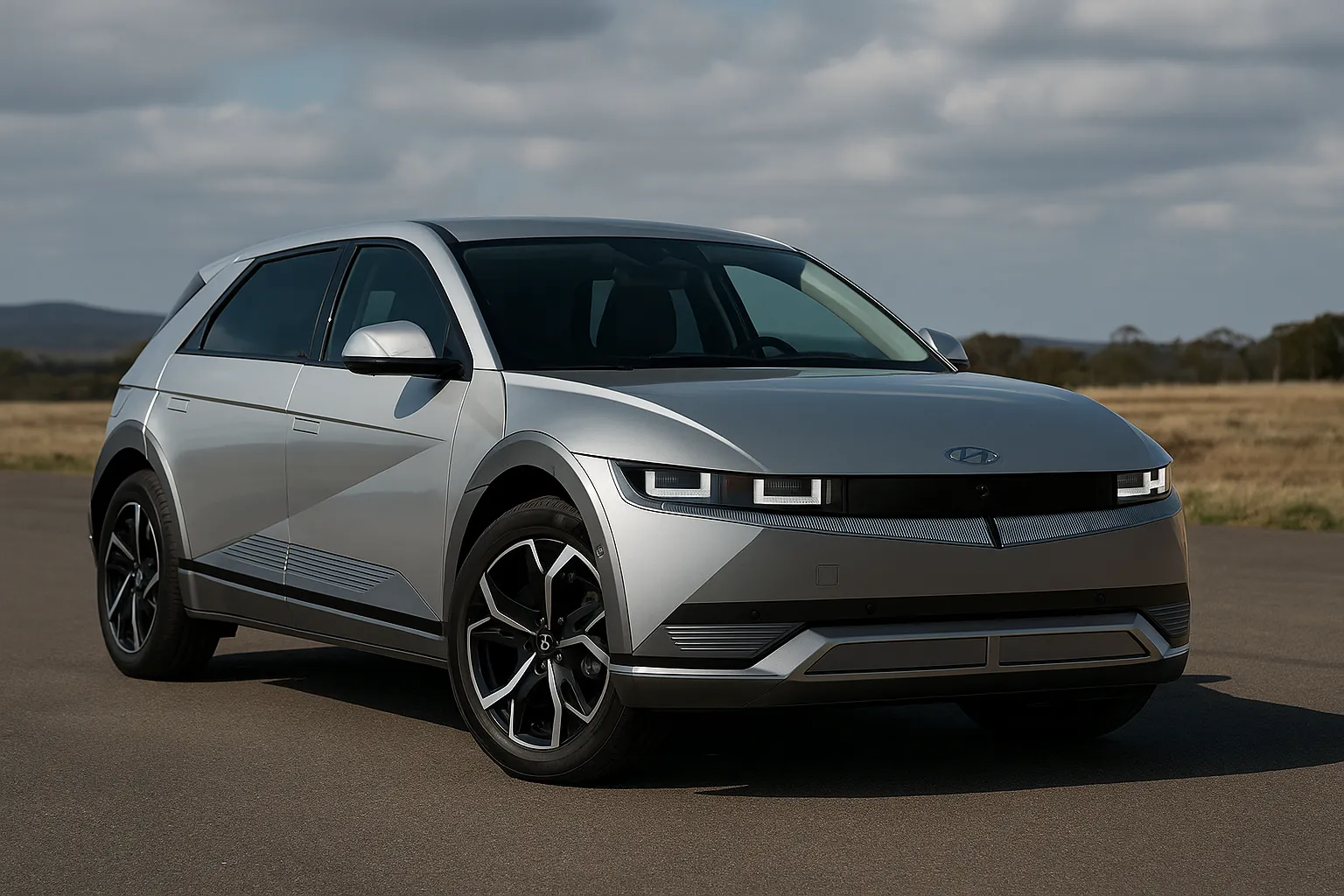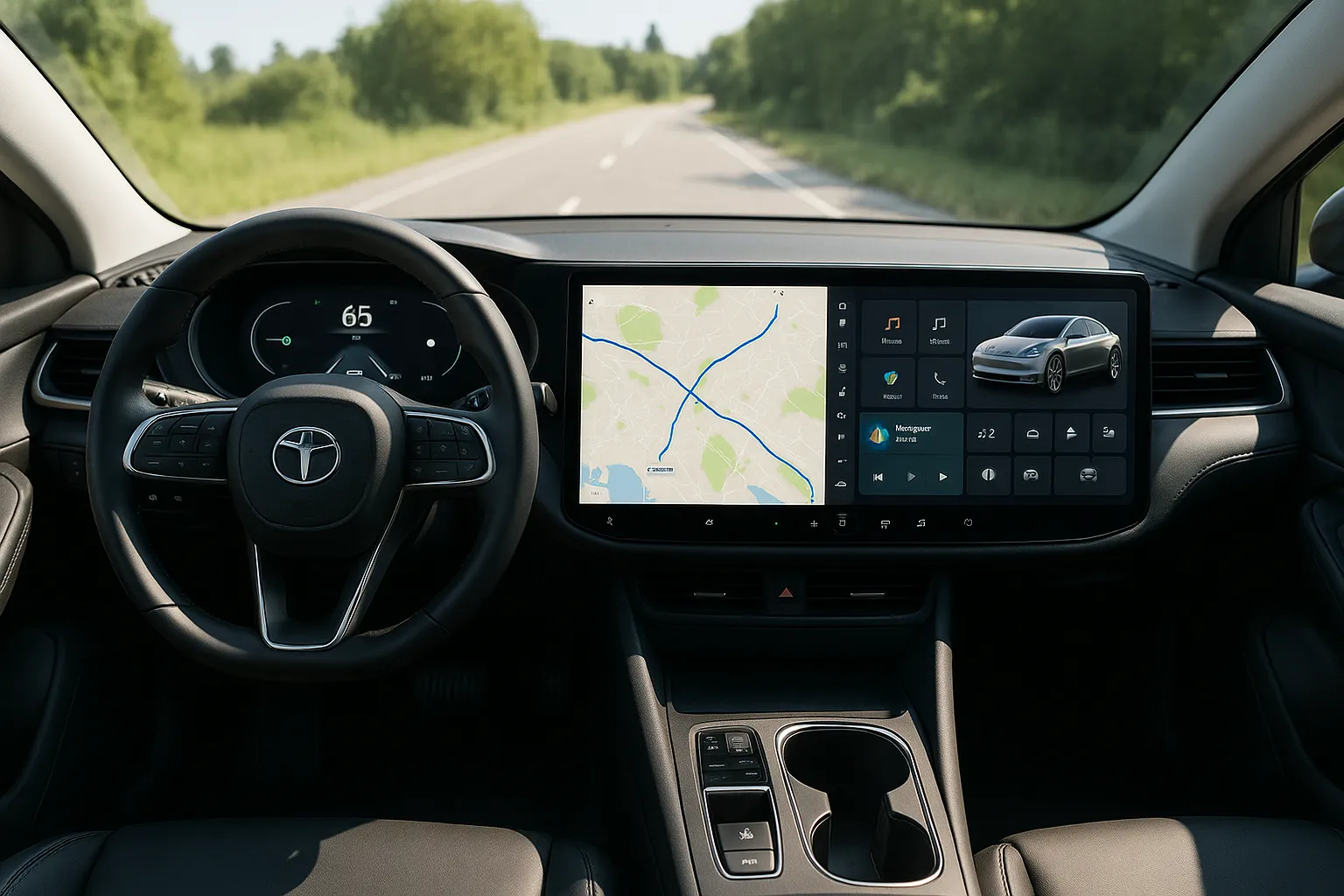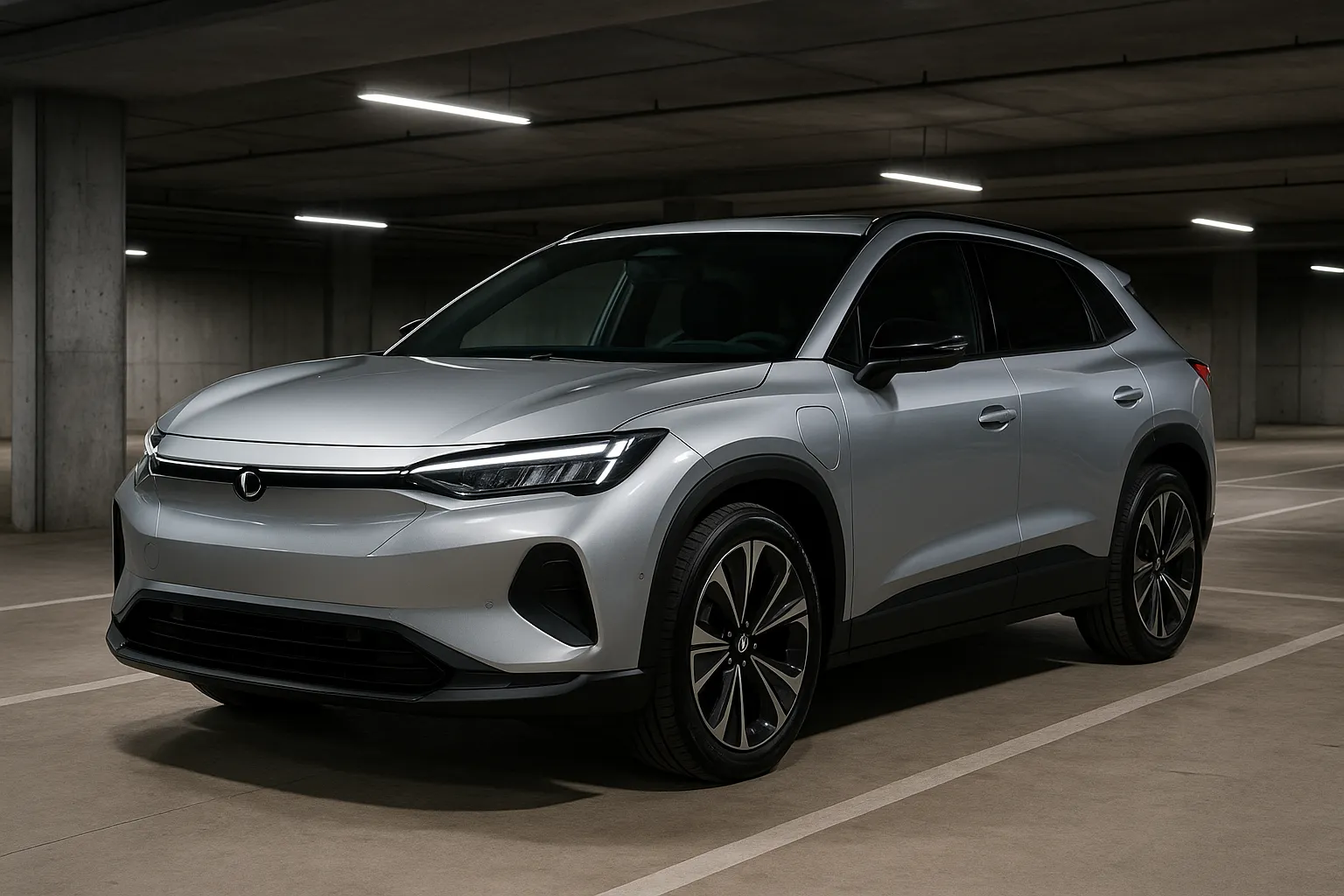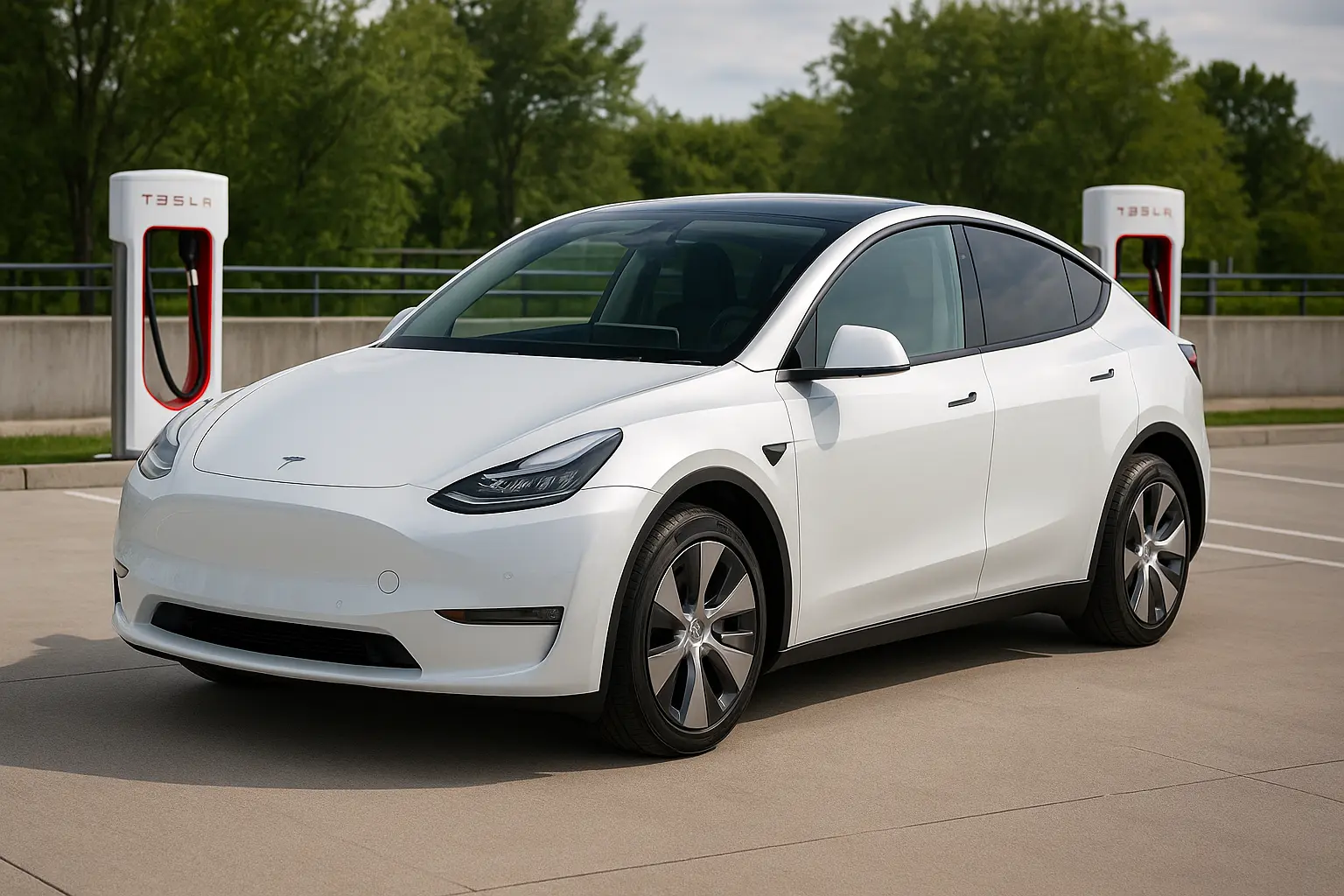The automotive world in 2025 is nothing short of a tech revolution. From the smallest hatchbacks to the burliest SUVs, modern vehicles now come packed with features that were once exclusive to luxury brands. As more Australians weigh their car purchase decisions amid economic shifts, EV expansion, and evolving safety standards, one thing is clear—buyers want value, innovation, and comfort.
But what exactly makes a 2025 car stand out? In this guide, we dive deep into the top features you shouldn’t skip when buying your next car in Australia. Whether you're eyeing a petrol hatch, a hybrid SUV, or a full-electric sedan, these features will shape your experience behind the wheel.

1. Advanced Driver Assistance Systems (ADAS)
Safety isn’t optional in 2025—it’s expected.
Key ADAS Features to Look For:
- Adaptive Cruise Control (ACC): Automatically adjusts speed to maintain safe distances.
- Lane Keep Assist & Lane Departure Warning: Keeps you centered and alerts if you drift.
- Blind Spot Monitoring: Essential on Aussie highways and urban merges.
- Autonomous Emergency Braking (AEB): Now standard in most segments, it’s a literal lifesaver.
- Rear Cross-Traffic Alert: Crucial when reversing in tight spaces or driveways.
Many 2025 vehicles also feature semi-autonomous driving modes, especially in high-end trims or EVs like Tesla’s Autopilot or Hyundai’s Highway Driving Assist.
Bonus Tip: Check ANCAP safety ratings and see how well these systems perform in real-world tests.
2. Wireless Connectivity – CarPlay, Android Auto, and More
Gone are the days of fumbling with cords.
Look for:
- Wireless Apple CarPlay / Android Auto: Now available in many mid-spec models, not just luxury cars.
- Wireless charging pads: Often overlooked but incredibly convenient.
- Multiple USB-C ports: Future-proof your cabin for fast-charging needs.
In 2025, infotainment ecosystems are smarter, faster, and often OTA (over-the-air) update capable. Even budget models like the 2025 Kia Picanto or MG3 Hybrid now include some form of wireless smartphone integration.
3. Digital Instrument Clusters and Head-Up Displays (HUD)
Information at a glance makes for safer, more engaging drives.
- Fully digital instrument clusters: Customisable and stylish.
- HUDs (Head-Up Displays): Project navigation and speed onto the windscreen.
- Integrated navigation with traffic updates: No more outdated sat-navs.
Cars like the Mazda CX-5, Toyota Corolla Cross Hybrid, and BMW X1 come with advanced visual interfaces designed to reduce driver distraction.
4. Cabin Comfort and Interior Luxury
Australians are spending more time in their vehicles—be it road trips or long commutes. Comfort is now a key buying factor.
Interior Features That Matter:
- Heated and ventilated seats
- Power-adjustable seating with memory
- Panoramic sunroof
- Ambient LED lighting
- Dual or tri-zone climate control
Brands like Mazda, Peugeot, and Hyundai are pushing luxury features into mid-range offerings.
5. Connected Car Services & Over-the-Air Updates
The rise of “smart cars” means your vehicle can now update itself, just like your phone.
Look for:
- Connected apps (remote start, climate control, vehicle tracking)
- OTA updates for software, maps, and infotainment
- Real-time diagnostics and service alerts
Tesla, Polestar, Ford, and Hyundai lead in this area—but many other brands are catching up quickly.
6. Parking Tech & 360-Degree Cameras
Australia’s urban parking woes make these features a must.
Parking Must-Haves:
- 360-degree surround-view camera
- Self-parking systems (auto-park)
- Rear parking sensors
- Reverse AEB (Automatic Emergency Braking)
Vehicles like the 2025 Ford Everest, Subaru Forester, and Honda CR-V offer this tech even in their mid-range trims.

7. Interior Tech That Adds Value
While performance and design are vital, so are small tech features that enhance your daily drive.
Smart Inclusions:
- Voice assistants (Google Assistant, Siri, or inbuilt AI)
- Built-in dash cams
- Digital key access via smartphone
- Customisable driver profiles
- Remote software diagnostics
These features now appear even in budget models like the BYD Dolphin, MG4 EV, or Hyundai Venue.
8. Safety Beyond the Basics
In addition to ADAS, newer cars are incorporating proactive safety tools:
- Driver monitoring systems (detect fatigue or distraction)
- Pre-collision pedestrian/cyclist detection
- Speed sign recognition
- Intersection turn assist
ANCAP testing in 2025 now places heavy emphasis on these next-gen safety features, so it pays to check the most recent ratings before buying.
9. Smart Climate Control & Air Filtration
This one matters more than ever—especially in Australia’s changing climate.
- Smart climate zones adjust air flow intelligently based on sunlight or occupancy.
- PM2.5 air filtration systems now common in EVs and premium SUVs.
- Remote climate pre-conditioning lets you cool or heat your car before entering—great for hot Aussie summers.
10. Sustainable Materials and Eco-Friendly Builds
If you’re eco-conscious, check for:
- Vegan leather or recycled interior materials
- Solar roofs (like in Hyundai Ioniq 6 or Prius Prime)
- Low-VOC cabin materials
- Minimal use of chrome or toxic adhesives
Many brands now proudly advertise these aspects, particularly Volvo, Tesla, and Kia EVs.
11. EV-Specific Features (If You’re Going Electric)
Buying an electric car? Here’s what to ensure:
- Battery pre-conditioning
- Vehicle-to-load (V2L) capability – use your car as a power source.
- Fast-charging compatibility (DC charging 100kW+ minimum)
- Range estimate recalibration with terrain/weather
- Charging station navigation integration
Standouts: Hyundai Ioniq 5, Kia EV6, Polestar 2, and BYD Seal.
12. Performance & Drive Modes
Even daily drivers in 2025 come with multiple drive modes:
- Eco, Normal, Sport, Snow, and more.
- Adaptive suspension systems for varying ride quality.
- AWD systems with torque vectoring in off-road or sporty models.
Drivers of all types—from tradies in a HiLux to city-dwellers in a Mazda3—can now enjoy tailored driving experiences.
13. Sound Systems & Acoustic Comfort
Yes, audio matters—especially for long Aussie drives.
- Branded audio systems (Bose, Harman Kardon, JBL)
- Acoustic glass for reduced wind noise
- Active noise cancellation
- Multiple USB/Bluetooth device pairing
Tip: test the sound system during your demo drive with your preferred playlist.
14. Rear Seat and Boot Practicality
Especially relevant for families or road trippers.
Look for:
- Flat floor rear cabins
- Rear sunshades
- Power tailgate with kick sensor
- Adjustable rear seat recline
- Boot space with underfloor storage
Utes like the Isuzu D-MAX, SUVs like the Toyota RAV4, and wagons like the Skoda Superb deliver here.
15. Customisation Options & Accessories
Australians love personalising their cars.
Don’t overlook:
- OEM accessory packs (roof racks, mats, weather protectors)
- Alloy wheel options
- Ambient lighting themes
- Tech upgrades at purchase (sound system, wireless charger)
Many 2025 models offer “build-your-car” tools online—use them to visualise your preferences before visiting a dealer.
Conclusion: Make Your 2025 Car Work for You
Buying a car in 2025 is no longer just about engine specs and brand loyalty. With new tech advancing rapidly and safety standards rising, choosing a model without the right features could mean missing out on comfort, efficiency, and resale value.
Before signing on the dotted line:
✅ Prioritise safety and connectivity
✅ Test all comfort features yourself
✅ Choose future-proof tech like OTA updates or V2L
✅ Ask about accessory bundles and warranty upgrades
Whether you're going electric, sticking to petrol, or trying hybrid, ensure your new car is packed with features that actually matter for Aussie roads.
Leave a comment
Your email address will not be published. Required fields are marked *




















